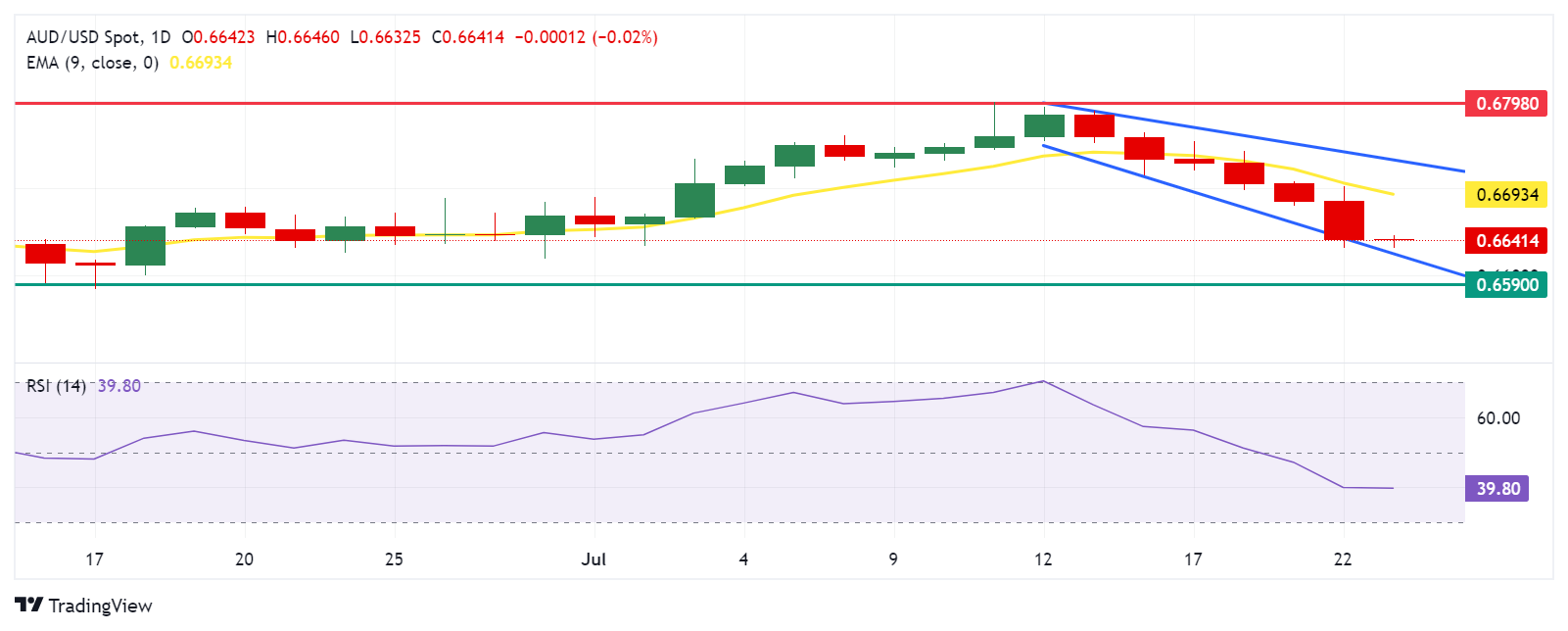Australian Dollar continues to lose ground due to lower energy, metals prices


- The Australian Dollar extends losses due to a sharp drop in energy and metals prices.
- The AUD could limit its downside due to a potential rate hike from the RBA.
- The US Dollar faces challenges due to increasing bets on a Fed rate cut in September.
The Australian Dollar (AUD) weakens for the seventh consecutive session on Tuesday, driven by a steep drop in energy and metals prices. Given Australia's heavy reliance on commodity exports, the AUD is particularly sensitive to fluctuations in these assets.
The AUD could receive support as robust employment data indicate tight labor market conditions and raise concerns about a potential interest rate hike from the Reserve Bank of Australia (RBA). Investors look forward to Australian manufacturing and services PMI figures this week to gauge the economy's health.
The AUD/USD pair could limit its downside as the US Dollar (USD) faces challenges on rising bets on a Federal Reserve (Fed) rate cut in September. Federal Reserve (Fed) Chair Jerome Powell noted that he is becoming more hopeful about the progress on inflation in recent months. Meanwhile, Fed Governor Christopher Waller stated that the time to lower the policy rate is drawing closer.
Daily Digest Market Movers: Australian Dollar declines due to lower energy, metals prices
- Steel rebar futures dropped below CNY 3,250 ($447) per tonne, reaching their lowest level in over seven years. China's economy grew less than anticipated in the second quarter. June saw the steepest decline in home prices in nine years, highlighting the severity of the crisis in the country's real estate sector.
- The People’s Bank of China (PBoC) has cut one- and five-year loan prime rates by ten basis points to 3.35% and 3.85%, respectively. Any change in the Chinese economy could impact the Australian markets as both countries are close trade partners.
- China's $715 billion hedge fund industry braces for increased pressure as new regulations take effect next month. These stricter guidelines will require funds to meet higher asset thresholds and more stringent rules for investments and marketing. As a result, some investment firms are now seeking additional capital, according to a Reuters report.
- US President Joe Biden abandoned his re-election bid on Sunday under growing pressure from his fellow Democrats and endorsed Vice President Kamala Harris as the party's candidate to face Republican Donald Trump in the November election, according to Reuters.
- Federal Reserve Bank of New York President John Williams stated on Friday that the long-term trends that caused declines in neutral interest rates before the pandemic continue to prevail. Williams noted, "My own Holston-Laubach-Williams estimates for r-star in the United States, Canada, and the Euro area are about the same level as they were before the pandemic," according to Bloomberg.
- Australian Bureau of Statistics on Thursday showed that Employment Change increased by 50,200 in June from May, surpassing market forecasts of 20,000, data showed on Thursday.
- Reuters cited Sean Langcake, head of macroeconomic forecasting for Oxford Economics Australia, saying, "The current pace of employment growth suggests demand is resilient and cost pressures will remain. We think the RBA will stay the course and keep rates on hold, but August is certainly a live meeting."
- Fed Chair Powell stated last week that the three US inflation readings from this year "add somewhat to confidence" that inflation is on track to meet the Fed’s target sustainably, suggesting that a shift to interest rate cuts may be imminent.
Technical Analysis: Australian Dollar drops to near 0.6650
The Australian Dollar trades around 0.6650 on Friday. The daily chart analysis shows that the AUD/USD pair depreciates within a descending channel, signaling a bearish bias. Although the 14-day Relative Strength Index (RSI) is below the 50 level, suggesting a confidence of a bearish trend.
The AUD/USD pair might test the lower boundary of the descending channel around the 0.6630 level. A decline below this level could pressure the pair to navigate the throwback support around 0.6590.
The immediate resistance appears at the nine-day Exponential Moving Average (EMA) at 0.6693, followed by the psychological level of 0.6700. A breakthrough above the latter could lead the AUD/USD pair to test the upper boundary of the descending channel around the 0.6760 level, followed by a sixth-month high of 0.6798.
AUD/USD: Daily Char


.jpg)


